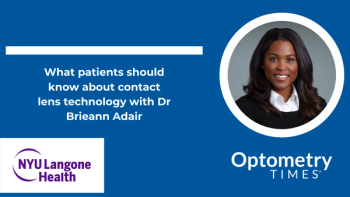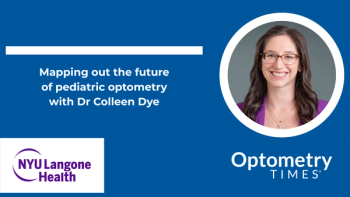
AAOpt 2025: All things optic neuritis
Raman Bhakhri, OD, FAAO, gives tips for identifying the root cause of optic neuritis.
Raman Bhakhri, OD, FAAO, gave a presentation on optic neuritis with Carlo Pelino, OD, FAAO; and Leonard Messner, OD. The presentation, "All Things Optic Neuritis," comprehensively explored the multifaceted nature of optic neuritis beyond traditional multiple sclerosis (MS) understanding. The lecture emphasized that optic neuritis is a general term indicating optic nerve inflammation, with multiple potential underlying causes. Although MS has traditionally been considered the primary cause, the presentation highlighted other critical conditions such as neuromyelitis optica (NMO) and myelin oligodendrocyte protein-associated disease (MOG). Key diagnostic considerations included recognizing typical and atypical presentation patterns. Typical MS cases often involve young females experiencing pain during eye movement and vision reduction. However, the speakers stressed the importance of not assuming MS in every case, recommending thorough laboratory testing to differentiate between NMO, MOG, and MS. The presentation delved into various diagnostic strategies, including careful patient history examination, visual field testing, optical coherence tomography (OCT), and identifying specific symptomatic indicators.
Critical diagnostic differentiators included the following:
- Demyelinating diseases often present with pain during eye movement
- Infectious/inflammatory conditions typically show additional systemic symptoms
- Specific optic nerve characteristics can indicate different underlying conditions
Bhakhri emphasized the necessity of comprehensive evaluation and appropriate specialist referrals. He recommended that eye care professionals:
- Conduct extensive initial assessments
- Perform available diagnostic tests
- Recognize when specialized medical intervention is required
- Make timely referrals to neurologists or infectious disease experts
The lecture underscored the complexity of optic neuritis, demonstrating that accurate diagnosis requires a nuanced, multifaceted approach. By considering a broad range of potential causes and conducting thorough investigations, health care professionals can more effectively diagnose and manage this challenging condition. The presentation ultimately highlighted the importance of maintaining a broad diagnostic perspective, leveraging available testing technologies, and collaborating across medical specialties to provide optimal patient care.
Newsletter
Want more insights like this? Subscribe to Optometry Times and get clinical pearls and practice tips delivered straight to your inbox.



















































.png)


